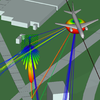Collaborative Applications Software Information
Collaborative applications software allows networked computer users to work together on related tasks via local or remote servers. Often, these users are dispersed across multiple geographic locations so that group work and face-to-face communication is impractical. For example, companies may use collaborative applications software so that developers from a company’s headquarters can collaborate with programmers who work from home or at satellite offices. Often, collaborative software or groupware includes features such as email, calendaring, conferencing, instant messaging, and bookmarking. Collaborative applications software with wikis and project management capabilities is also available. Some products are designed to run under proprietary operating systems such as Microsoft Windows (Microsoft) and feature a client/server architecture. Web-based collaborative applications software requires only a browser and an Internet connection. Selecting collaborative applications software requires an analysis of specifications, system requirements, and types. There are many different types of collaborative tools. Major categories include communication tools, conferencing tools, and management tools. Collaborative communication applications simply transmit messages, files, documents, and other data between networked computer users. Features include e-mail, faxing, revision control, voice mail, and wikis. Collaborative conferencing applications also promote information sharing, but in a more interactive manner. Such collaborative applications software may provide forums, instant messaging, data conferencing, videoconferencing, and application sharing. Collaborative applications software that provides an electronic meeting system (EMS) is also available. With an EMS, dispersed users can view presentations or video content at the same time. Collaborative management tools are designed to manage and facilitate group activities. Examples of this type of collaborative applications software include electronic calendars, project management software, workflow systems, knowledge management software (KM), enterprise bookmarking, and project extranets. Electronic calendars are a type of time management software that enables users to schedule events and notify or remind group members automatically. Project management software is used to define, schedule, and track the steps or tasks in a project such as the development of a new software application. Workflow systems model a knowledge-based business process. KM software and enterprise bookmarking are designed to maximize the sharing of electronic data. Project extranets and other types of collaborative applications software are also available.



